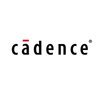
i
Lam
Research
Filter interviews by
Lam Research Sdet (Software Development Engineer in Test) Interview Questions and Answers
Lam Research Sdet (Software Development Engineer in Test) Interview Experiences
1 interview found
Sdet (Software Development Engineer in Test) Interview Questions & Answers
posted on 31 May 2021
I applied via Recruitment Consultant and was interviewed before May 2020. There were 4 interview rounds.
Interview Questionnaire
1 Question
- Q1. Simple automation related questions. Basic java questions, 2 analytical question, manual testing related questions
Interview Preparation Tips
You must have automation background, simple question they asked related to manual testing and automation. Be very confident that's what they check mainly.
Only advice is be very formal and don't be nervous, answer smartly show the confident you have inside.
Top trending discussions






Interview questions from similar companies

I applied via Recruitment Consultant and was interviewed before May 2020. There were 3 interview rounds.
Interview Questionnaire
2 Questions
- Q1. DS and Algo questions based on DP and backtracking
- Q2. Clone linked list with random pointers.
- Ans.
Clone a linked list with random pointers.
Create a new node for each node in the original list.
Store the mapping between the original and cloned nodes in a hash table.
Traverse the original list again and set the random pointers in the cloned list using the hash table.
Return the head of the cloned list.
Interview Preparation Tips
Skills evaluated in this interview

I appeared for an interview before May 2021.
Round duration - 120 Minutes
Round difficulty - Medium
(3 Questions)
Round duration - 60 Minutes
Round difficulty - Easy
- Q1.
Insertion Sort in a Linked List
Given a singly linked list with 'N' nodes containing integer values, your task is to sort the list using insertion sort and output the sorted list.
Insertion Sort is an al...
- Ans.
Implement insertion sort algorithm on a singly linked list with integer values.
Traverse the linked list and for each node, find its correct position in the sorted list.
Remove the node from the original list and insert it at the correct position in the sorted list.
Repeat this process until all nodes are sorted.
Ensure the implementation is in-place, without using extra space.
Handle edge cases like empty list or single no...
- Q2.
Implement Stack with Linked List
Your task is to implement a Stack data structure using a Singly Linked List.
Explanation:
Create a class named
Stackwhich supports the following operations, each in O(1... - Ans.
Implement a Stack data structure using a Singly Linked List with operations in O(1) time.
Create a class named Stack with getSize, isEmpty, push, pop, and getTop methods.
Use a Singly Linked List to store the elements of the stack.
Ensure each operation runs in O(1) time complexity.
Handle cases where the stack is empty appropriately.
Implement the logic for each query type as specified in the input and output sections.
- Q3.
Prime Numbers within a Range
Given an integer N, determine and print all the prime numbers between 2 and N, inclusive.
Input:
Integer NOutput:
Prime numbers printed on separate linesExample:
Input...
- Ans.
Generate and print all prime numbers between 2 and N, inclusive.
Iterate from 2 to N and check if each number is prime
Use a helper function to determine if a number is prime
Print each prime number on a new line
(1 Question)
Round duration - 45 Minutes
Round difficulty - Medium
This round was based on oops concepts and their applications and about STLs.
- Q1.
Rectangular Numbers Pattern
Given a number
N, generate a pattern where the outer rectangle is filled with the numberN, and the inner rectangles contain decreasing numbers down to 1.Input:
The input be... - Ans.
Generate a rectangular pattern with outer rectangle filled with N and inner rectangles containing decreasing numbers.
Create a 2-D array with dimensions based on input N
Fill the outer rectangle with N and inner rectangles with decreasing numbers down to 1
Adjust the values in the inner rectangles based on the layer number
Return the generated pattern as a 2-D list/array
Round duration - 30 Minutes
Round difficulty - Easy
This around was basically to judge my communication and behavioral skills.
Interview Preparation Tips
Tip 1 : Basics should be very clear related to DSA.
Tip 2 : Good knowledge of OS will be plus for Qualcomm
Tip 3 : One should revise the college project thoroughly before interview.
Tip 1 : Be brief while writing resume.
Tip 2 : Mention atleast 2 projects.
Skills evaluated in this interview

Software Engineer Interview Questions & Answers
Cadence Design Systemsposted on 7 May 2017
I appeared for an interview in Feb 2017.
Interview Questionnaire
7 Questions
- Q1. What is a malloc function and where is it used and how is it different from new?
- Ans.
malloc is a function in C that dynamically allocates memory on the heap. It is used to allocate memory for variables or data structures.
malloc is used in C programming language.
It is used to allocate memory on the heap.
malloc is different from 'new' in C++ as it does not call constructors for objects.
- Q2. What is the difference between C++ and Objective C and where will you use it?
- Ans.
C++ is a general-purpose programming language while Objective C is a superset of C used for iOS and macOS development.
C++ is widely used for developing applications, games, and system software.
Objective C is mainly used for iOS and macOS development.
C++ supports both procedural and object-oriented programming paradigms.
Objective C is an object-oriented language with dynamic runtime features.
C++ has a larger community a...
- Q3. What is the difference between class container and class composition?
- Ans.
Class container is a class that holds objects of other classes, while class composition is a way to combine multiple classes to create a new class.
Class container holds objects of other classes, acting as a collection or container.
Class composition combines multiple classes to create a new class with its own behavior and attributes.
In class container, the objects are typically stored in a data structure like an array o...
- Q4. There are fifteen horses and a racing track that can run five horses at a time. You have to figure out the top 3 horses out of those and you don't have any timer machine to measure. How will you find the t...
- Ans.
Divide the horses into groups of 5 and race them. Take the top 2 from each race and race them again. Finally, race the top 2 horses to determine the top 3.
Divide the horses into 3 groups of 5 and race them.
Take the top 2 horses from each race and race them again.
Finally, race the top 2 horses to determine the top 3.
- Q5. What is the most difficult problem that you have solved (during work) till now and why you think you could do so?
- Ans.
Developing a real-time data processing system for a high-traffic e-commerce website
Implemented a distributed system architecture to handle large volumes of data
Optimized algorithms for efficient data processing and storage
Utilized caching mechanisms to improve system performance
Worked closely with cross-functional teams to troubleshoot and resolve issues
Example: Successfully reduced data processing time by 50% by imple...
- Q6. Why you want to change your current job?
- Q7. What is the width of a tree? How will you calculate the width of the tree?
- Ans.
The width of a tree is the maximum number of nodes at any level in the tree.
To calculate the width of a tree, we can perform a level order traversal and keep track of the maximum number of nodes at any level.
We can use a queue data structure to perform the level order traversal.
At each level, we count the number of nodes in the queue and update the maximum width if necessary.
Interview Preparation Tips
Skills evaluated in this interview

I appeared for an interview in Aug 2017.
Interview Preparation Tips
Duration: 1 hour 30 minutes
Total Questions: 60
Round: Technical Interview
Experience: Questions about DS , CN and basic resume
Round: Technical Interview
Experience: Questions about RT OS and memory mapping. And other operating system related questions.
Projects done so far.

Software Developer Interview Questions & Answers
Cadence Design Systemsposted on 10 May 2015
Interview Questionnaire
9 Questions
- Q1. Tree questions related like traversal?
- Q2. Locate the sum of 2 numbers in a linear array (Unsorted and sorted) and their complexities
- Ans.
Locate sum of 2 numbers in a linear array (unsorted and sorted) and their complexities
For unsorted array, use nested loops to compare each element with every other element until the sum is found
For sorted array, use two pointers approach starting from the beginning and end of the array and move them towards each other until the sum is found
Complexity for unsorted array is O(n^2) and for sorted array is O(n)
- Q3. Pointers with increment/decrement, address of and value at operators (++,–,*,&)
- Ans.
Pointers are used to manipulate memory addresses and values in C++. Increment/decrement, address of and value at operators are commonly used.
Incrementing a pointer moves it to the next memory location of the same data type
Decrementing a pointer moves it to the previous memory location of the same data type
The address of operator (&) returns the memory address of a variable
The value at operator (*) returns the value sto...
- Q4. A point and a rectangle is present with the given coordinates. How will you determine whether the point is inside or outside the rectangle?
- Q5. There is a point inside the rectangle. How will you determine the line that passes through the point and divides the rectangle into 2 equal halves?
- Q6. There is a scheme which contains 8-bit and 16-bit signed numbers. How many such combinations are possible?
- Ans.
There are multiple combinations of 8-bit and 16-bit signed numbers. How many such combinations are possible?
There are 2^8 (256) possible combinations of 8-bit signed numbers.
There are 2^16 (65,536) possible combinations of 16-bit signed numbers.
To find the total number of combinations, we can add the number of combinations of 8-bit and 16-bit signed numbers.
Therefore, the total number of possible combinations is 256 + ...
- Q7. You are given an array of elements. Some/all of them are duplicates. Find them in 0(n) time and 0(1) space. Property of inputs – Number are in the range of 1..n where n is the limit of the array
- Ans.
Find duplicates in an array of elements in 0(n) time and 0(1) space.
Use the property of inputs to your advantage
Iterate through the array and mark elements as negative
If an element is already negative, it is a duplicate
Return all the negative elements as duplicates
- Q8. Given a array of digits. print all combination of of these i.e all no formed by these. repetition allowed. and then repetition not allowed example: i/p: arr={1,2,3} o/p: (without repetition) 123, 132, 213,...
- Ans.
Generate all combinations of digits from an array, allowing and disallowing repetition.
Use recursion or backtracking to generate combinations.
For repetition allowed: e.g., arr={1,2}, combinations are 11, 12, 21, 22.
For repetition not allowed: e.g., arr={1,2,3}, combinations are 123, 132, 213, 231, 312, 321.
Utilize a set to track used digits when repetition is not allowed.
- Q9. Questions on project
Interview Preparation Tips
Duration: 90 minutes
Total Questions: 3
Round: HR Interview
Experience: HR interview was all about my projects, my background and a few more typical HR questions. It was pretty easy to answer them.
Skills: Algorithm, Data structure, C++
College Name: IIT ROORKEE
Skills evaluated in this interview

I appeared for an interview in Aug 2017.
Interview Questionnaire
8 Questions
- Q1. Basics of C
- Q2. Puzzles on data structures
- Q3. Asked on project
- Q4. C basics
- Q5. 3 basic and simple codes
- Q6. Family background
- Q7. How was technical interviews
- Q8. Why should we not hire you
Interview Preparation Tips
Experience: It was just mcq questions but had negative marking
Duration: 1 hour 30 minutes
Total Questions: 60
Round: Technical Interview
Experience: It was cool and interactive round and was fun
Round: Technical Interview
Experience: It was interesting but I fumbled a little
Round: HR Interview
Experience: It was ok
College Name: Cummins College Of Engineering For Women (CCOEW)

I appeared for an interview before May 2016.
Interview Preparation Tips
Experience: it was elitmus test conducted by the company itself on campus. As per my knowledge only those scoring 90 percentile got selected for round 2.
Tips: Attempt only those ques that are necessary for scoring 90+ in e litmus. Specially in verbal don't attempt more then required questions, though you might be tempted. The aim is not to score max bt to score 90+
Round: Technical Interview
Experience: This was a programming based round. I was asked to write algorithms for various array linked list based problems. There was cross questioning prompting to reduce complexity and to use different data structures for same problems.
Mostly it focused on subjects like c, data structures and ADA.
Tips: Be clear with basic of data structures and algorithms. Pointers, queue, stacks, array linked lists, sorting etc are the keywords.
Round: Technical Interview
Experience: This was a information security specific round since that was my major. In depth cross questioning on my thesis topics, honeypots, network intrusion etc. Security certificates, and on the go problems to provide security solution layer wise in different scenarios. Security concept of torrents was also asked in detail.
Tips: It was more of a security discussion and throwing of ideas about how things in a particular case could work or could not. Don't worry about right or wrong answer just be clear with your reasoning about the solution you are suggesting.
Round: Other Interview
Experience: I don't know what to name this round, but it focused mainly on developing test cases for an object. Say they gave me a stapler and said to develop a test plan listing down test cases for a given object to pass so that it can be confirmed that it is a stapler. Another scenario was with a lift.
Tips: This is one round where your presence of mind and inter personal skills matter. I think the way you present your thoughts was most important here.
Round: Behavioural Interview
Experience: This was was mostly about how would you react in a given professional situation
Like your assigned work could not be completed on time, or if you are doing something wrong with the work assigned.
Tips: This is all about inter personal skills and putting your best foot forward :)
College Name: Indira Gandhi Delhi Technical University For Women, Delhi

I applied via Campus Placement and was interviewed in Dec 2016. There were 5 interview rounds.
Interview Questionnaire
14 Questions
- Q1. Four people and torch problem?
- Q2. What is the difference between AC and DC?
- Q3. Fill the cells in the pyramid?
- Ans.
Fill the cells in the pyramid
The pyramid is a pattern of numbers or characters arranged in a triangular shape
Each row of the pyramid has one more cell than the previous row
Start filling the pyramid from the top and move downwards
The cells can be filled with any desired numbers or characters
- Q4. What is alternator and generator?
- Ans.
An alternator and generator are devices that convert mechanical energy into electrical energy.
Both alternators and generators are used to generate electricity.
They work on the principle of electromagnetic induction.
Alternators are commonly used in modern vehicles to charge the battery and power the electrical systems.
Generators are often used as backup power sources during power outages.
Examples of alternators include ...
- Q5. What is the complexity of quick sort?
- Q6. What are interesting u did?
- Ans.
I developed a mobile app for tracking daily water intake and hydration levels.
Researched best practices for hydration tracking
Designed user-friendly interface for inputting water intake
Implemented data visualization for tracking hydration levels
Tested app with focus groups for feedback
Continuously updated app based on user suggestions
- Q7. Explain SHA Algorithm?
- Ans.
SHA Algorithm is a cryptographic hash function that takes an input and produces a fixed-size output.
SHA stands for Secure Hash Algorithm.
It is widely used in various security applications and protocols.
SHA-1, SHA-256, SHA-384, and SHA-512 are common variants of SHA.
It generates a unique hash value for each unique input.
The output is a fixed length, regardless of the input size.
SHA is used for data integrity, password h...
- Q8. 5 heads and two tails, separate into two groups such that two groups should have equal number of tails?
- Q9. Delete a node in linked list?
- Q10. Tell me about yourself?
- Q11. What are the challenges you faced in the interns?
- Q12. Preference of job place?
- Q13. How will you solve the disputes?
- Ans.
I will solve disputes by promoting open communication, active listening, and finding mutually beneficial solutions.
Encourage open and honest communication between parties involved
Actively listen to each party's concerns and perspectives
Identify common goals and interests to find mutually beneficial solutions
Mediate discussions and facilitate negotiations if necessary
Document agreements and ensure follow-up to prevent f...
- Q14. What is your view about Qualcomm?
Interview Preparation Tips
Experience: Simple aptitude questions and technical questions which includes OOPS, Computer networks
Duration: 1 hour 25 minutes
Total Questions: 50
College Name: IIT Madras
Skills evaluated in this interview

I appeared for an interview in Dec 2016.
Interview Questionnaire
4 Questions
- Q1. Simple algorithm coding questions, e.g.- fibonacci, prime number
- Q2. Some hardware questions
- Q3. Networking questions and some others
- Q4. Intro, strength, weakness, why we hire you, etc. common HR questions
Interview Preparation Tips
Tell us how to improve this page.
Lam Research Interviews By Designations
- Lam Research Electrical Engineer Interview Questions
- Lam Research Technical Engineering Lead Interview Questions
- Lam Research Software Engineer Interview Questions
- Lam Research Software Developer Interview Questions
- Lam Research Business Analyst Interview Questions
- Lam Research Engineering Manager Interview Questions
- Lam Research Data Scientist Interview Questions
- Lam Research Design Engineer Interview Questions
- Show more
Interview Questions from Similar Companies
|
Senior Buyer
59
salaries
| ₹10.5 L/yr - ₹16.2 L/yr |
|
Senior Engineer Mechanical
52
salaries
| ₹13.1 L/yr - ₹20.5 L/yr |
|
Senior Software Engineer
47
salaries
| ₹16 L/yr - ₹28 L/yr |
|
Design Engineer
45
salaries
| ₹4.8 L/yr - ₹10.6 L/yr |
|
Program Manager
45
salaries
| ₹15.4 L/yr - ₹30 L/yr |

Qualcomm

Intel

Molex

TDK India Private Limited
- Home >
- Interviews >
- Lam Research Interview Questions












